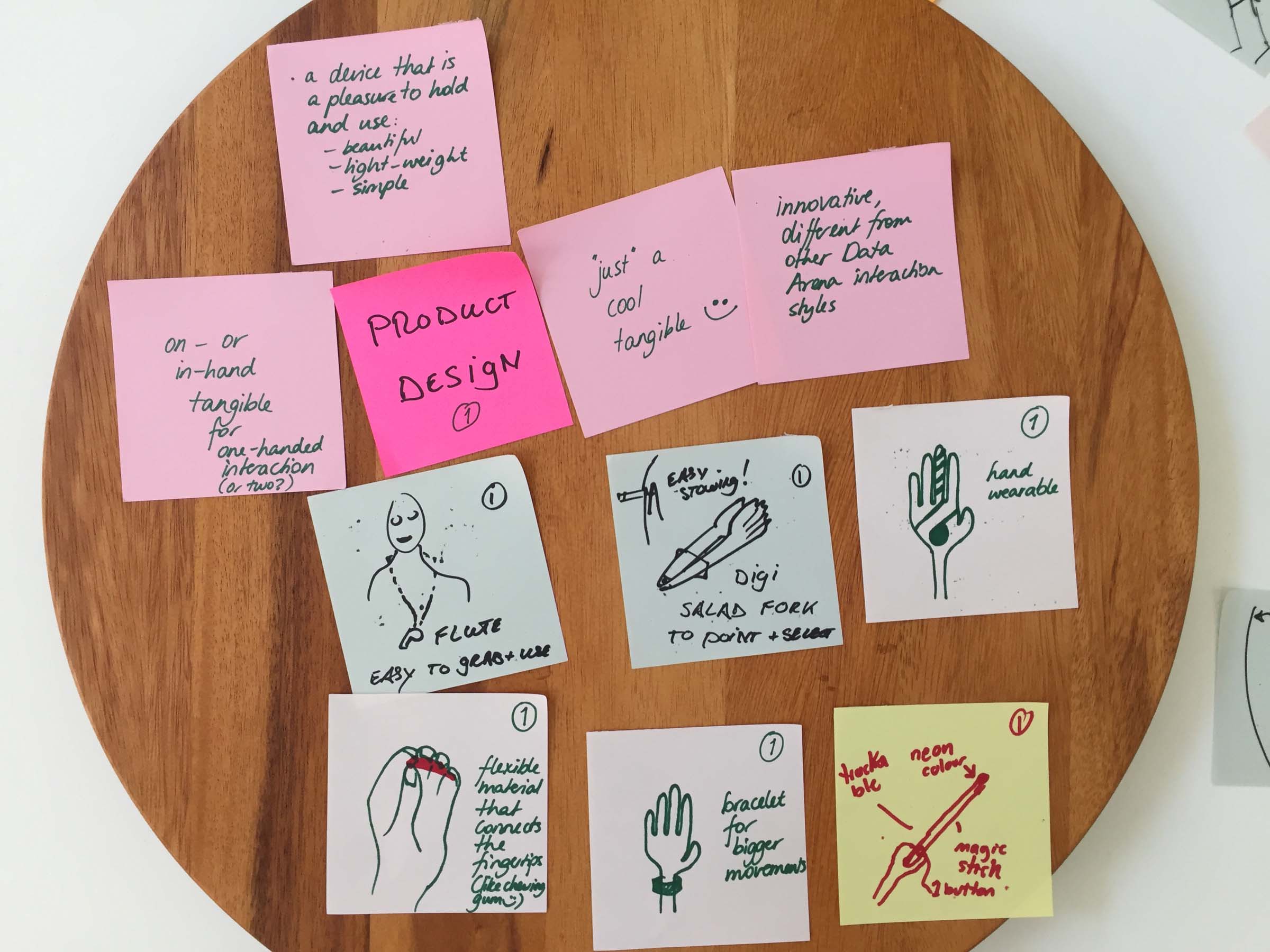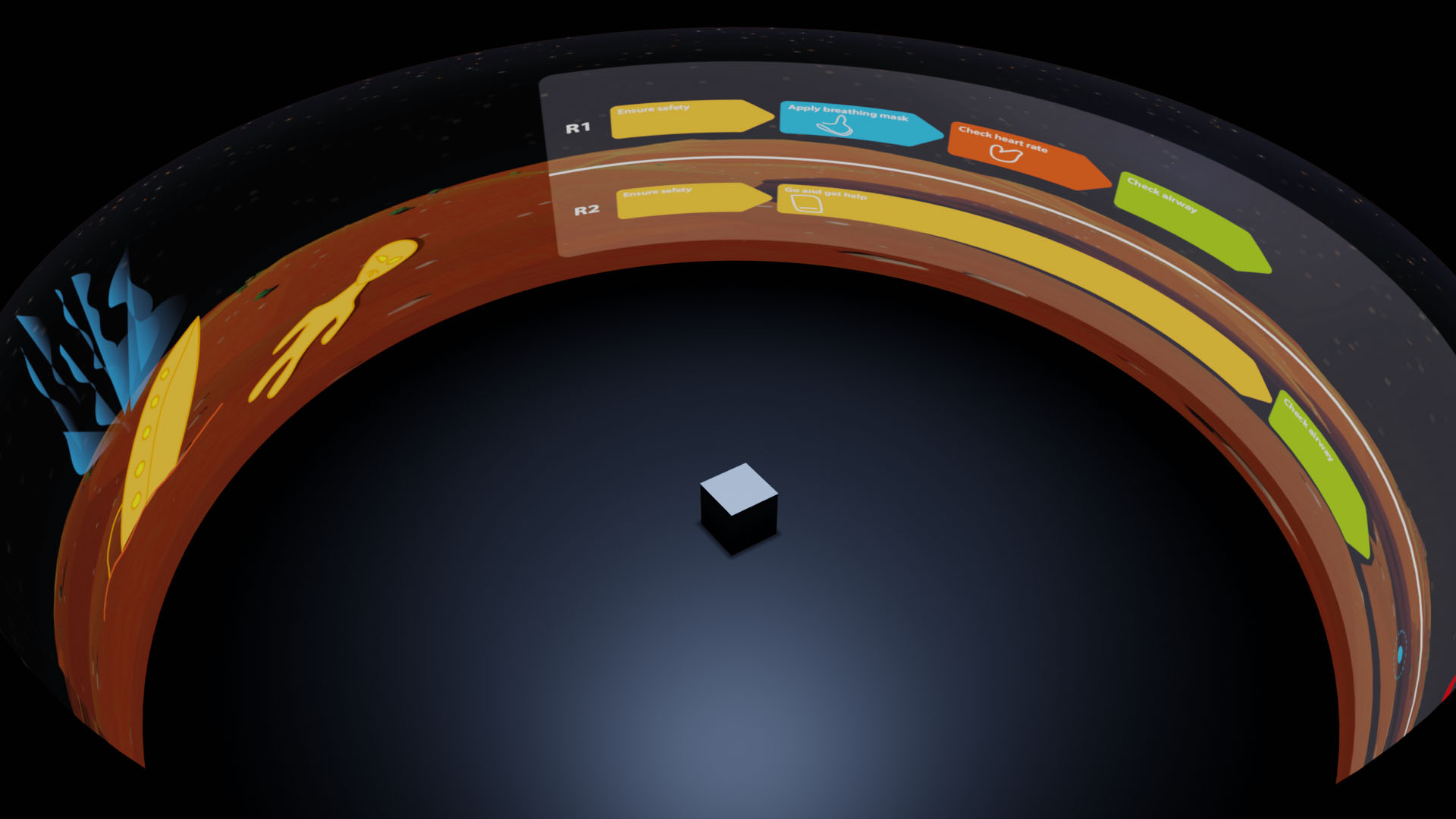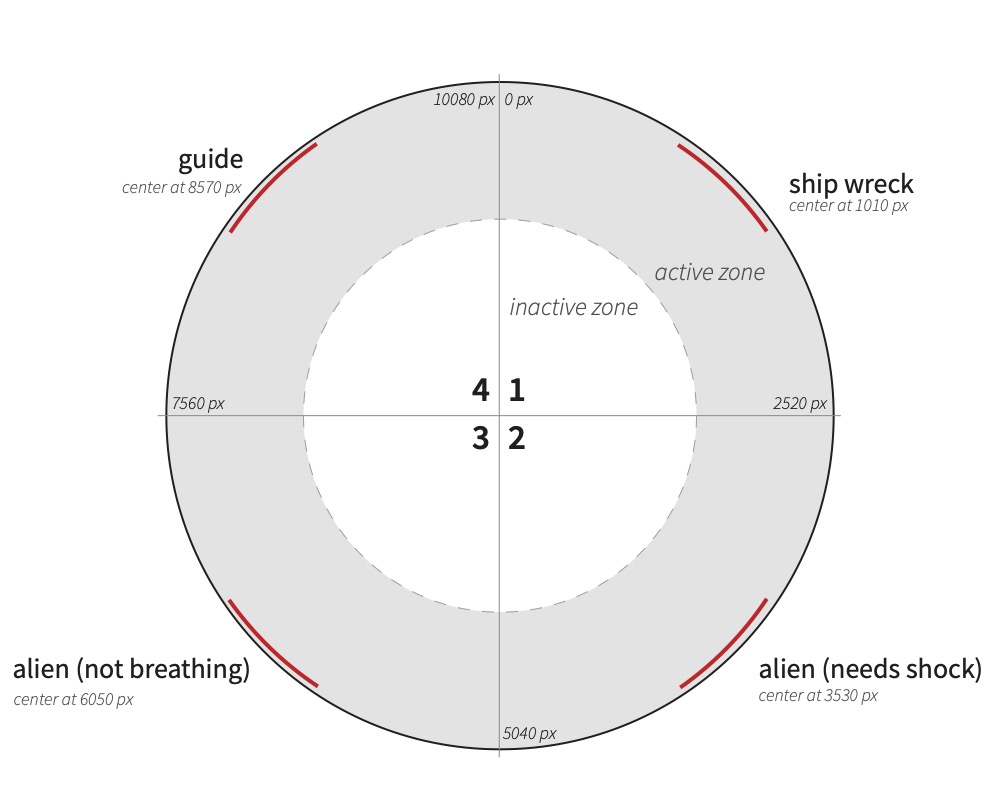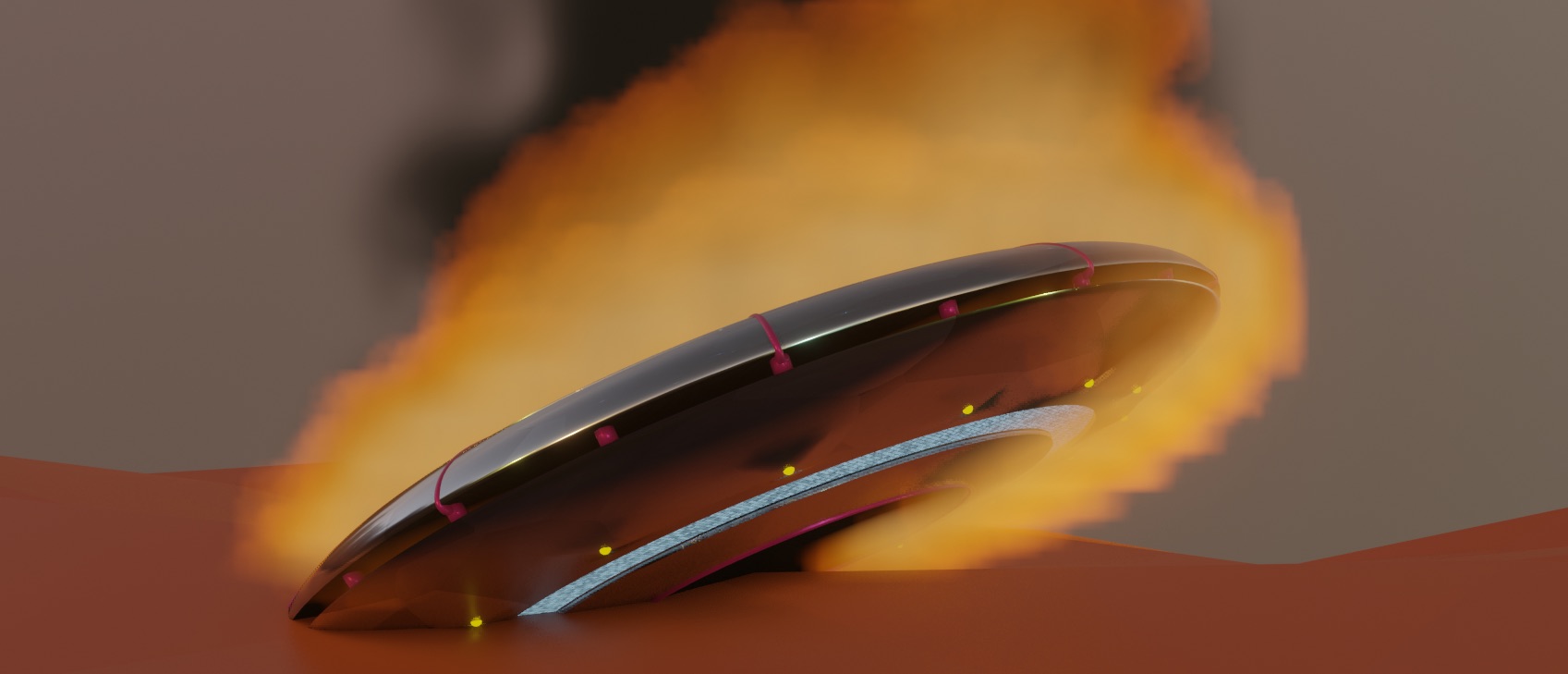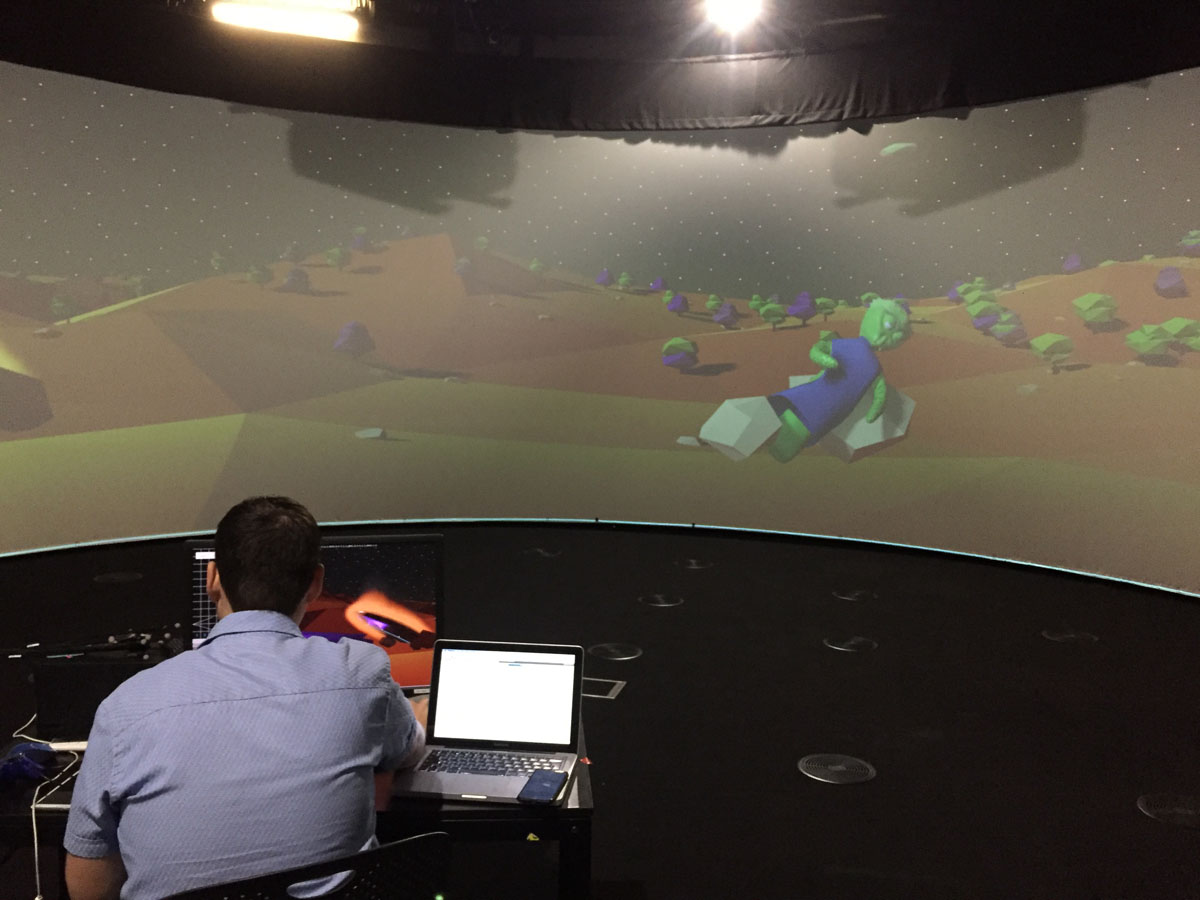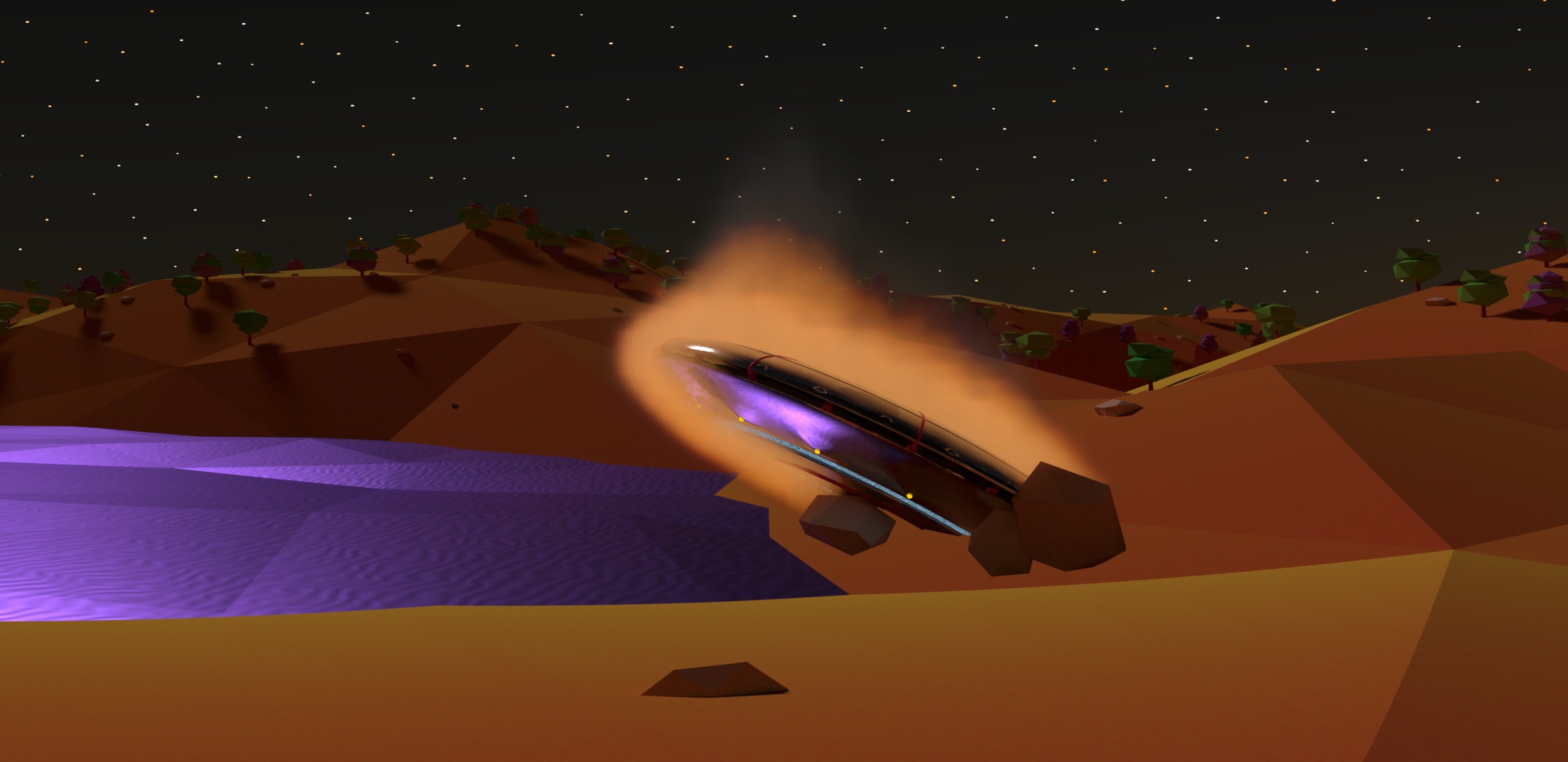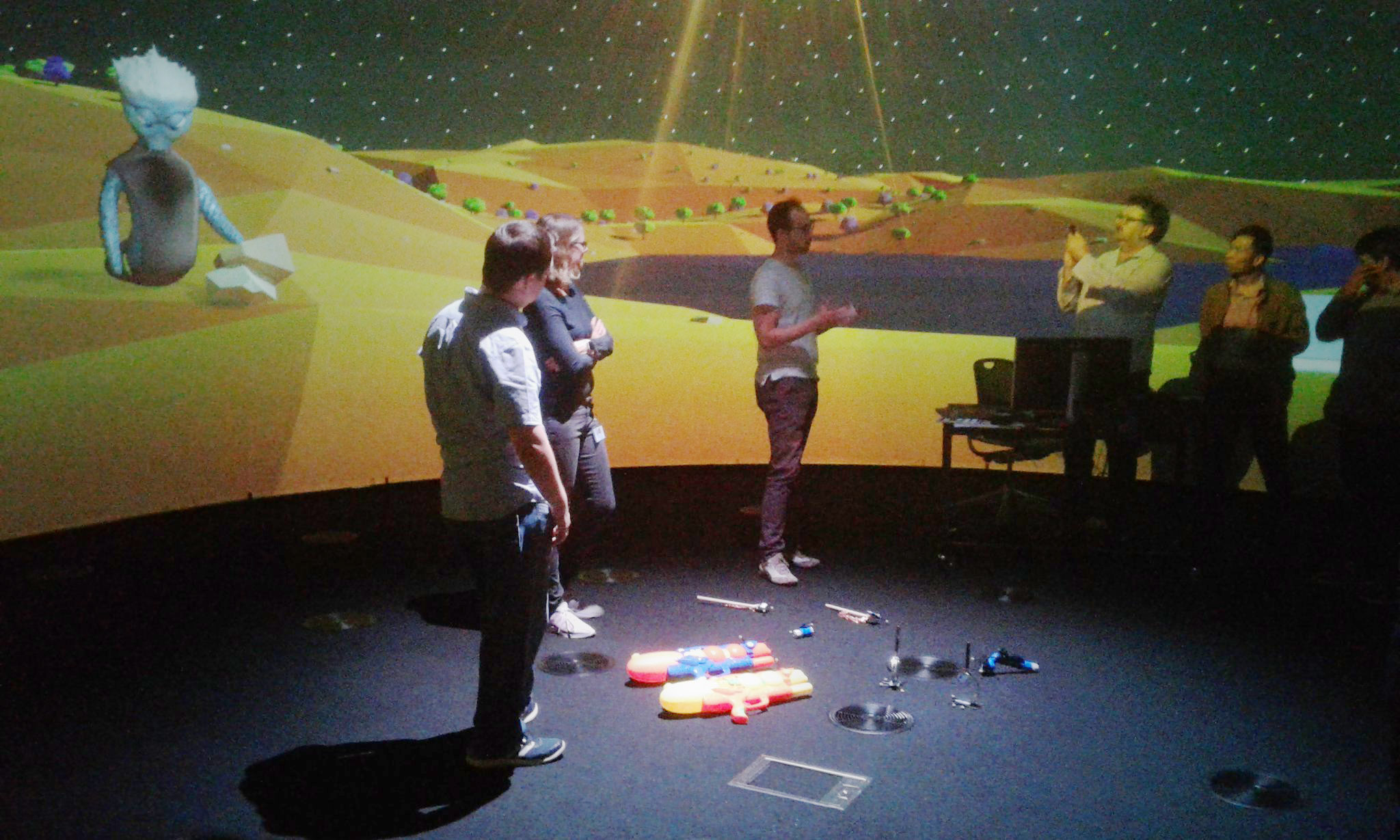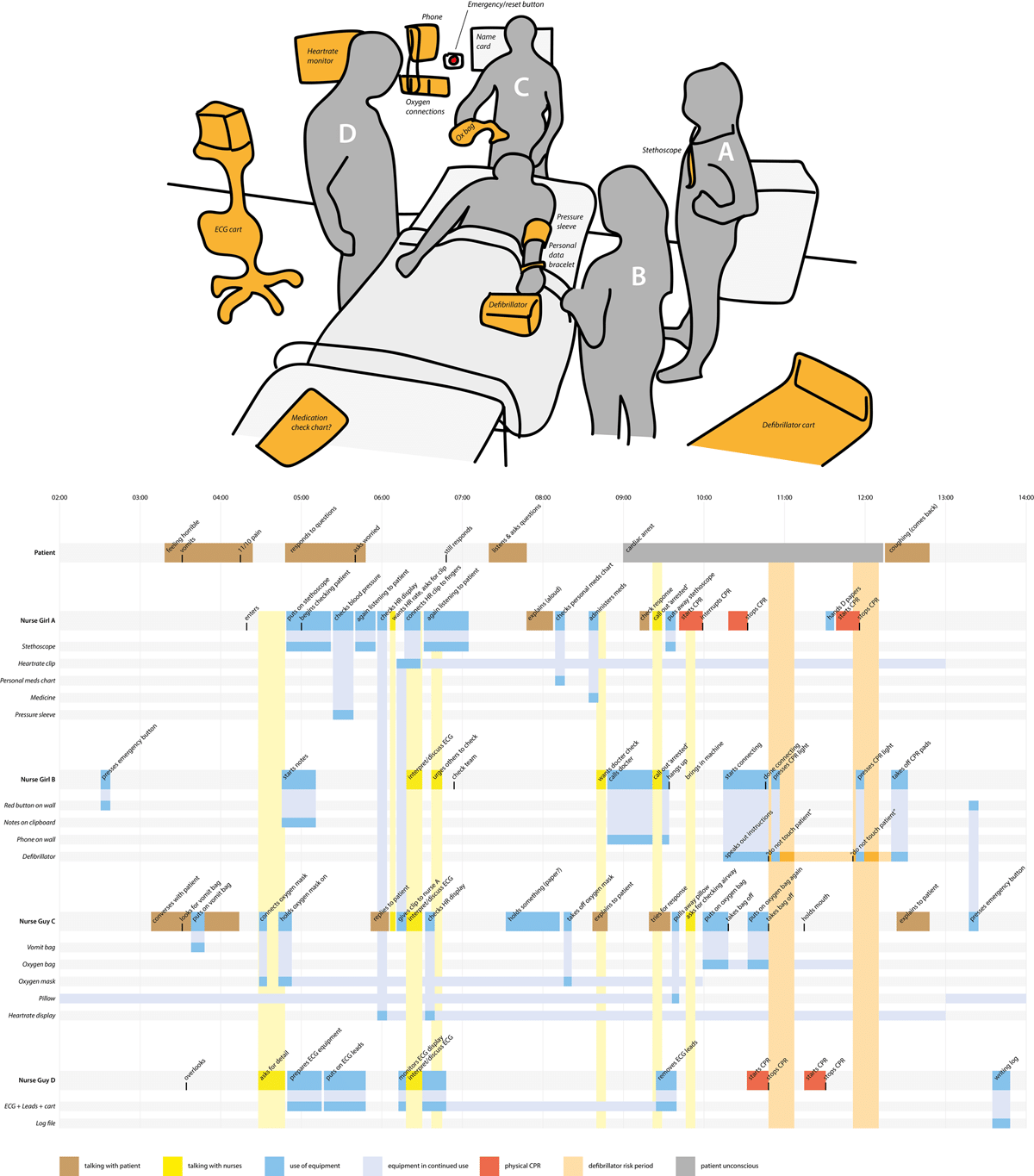First Aid for Aliens in VR
A spaceship has crashed nearby and you are the first responders. Find out what the situation is and try to save any survivors…
This project is a demo application for collaborative actions in a virtual reality space. This work demonstrates how two people can use tangible objects in a virtual reality space to accomplish tasks together. This was done on a small research exhibition grant to better demonstrate multi-user interaction in the UTS Data Arena, a large-scale (10m diameter) 360º display. I took on ideation, user-facing parts of software development and animation of a virtual first aid scenario.
Our scenario is for groups to provide first aid to aliens. We studied real life first aid scenarios but chose to represent a simpler and more forgiving situation in the final version. The aim is to showcase how, in the Data Arena, two people have to combine their tools (doing the same action, be in the same location, or do complementary actions in right spots) to accomplish tasks such as defibrillation of an alien and extinguishing a spaceship on fire.
Still to come: edited video from final demo
Background
The project was funded on a UTS Data Arena Research Exhibition grant (worth $8,500) for the creation and implementation of a tangible user interface in the UTS Data Arena. This grant was awarded to Prof Elise van den Hoven and Dr Roberto Martinez-Maldonado, with Iván and myself as worker bees. Development work was done by Iván Silva Feraud (programming and infrared trackers) and Doménique van Gennip (visuals, animation, game logic and design). During our research on first aid in clinical and surf lifesaving environments, we were assisted and advised by Evelyn Palominos Letelier and Dr Gaby Quintana Vigiola.
Technical setup
The demo runs as a webpage in a modern web browser. In the Data Arena, this webpage is stretched across the width and height of the large 360º screen (roughly 10480px by 1200px). We use a custom web server to feed this webpage information from position trackers attached to the tools used to mend the aliens and spaceship. The IR markers are tracked by a system in the Data Arena to which our server subscribes, processing and sending on this data to the webpage where the main game logic translates it into actions onscreen.
The full code for the game is available online: https://github.com/dvangennip/TIA_demo_app. Code for the position tracking and interfacing with the Data Arena itself has not been published.
More on the process
